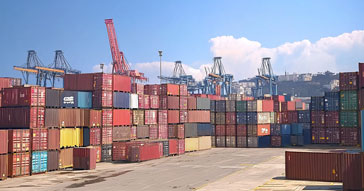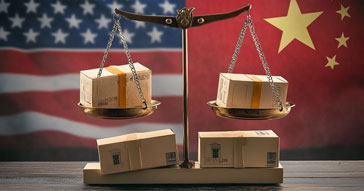The Price of Tariffs: How Trade Wars Could Impact Your Wallet in 2025
What Do New Tariffs Mean for American Consumers? | Trade War

The U.S. is gearing up for another round of trade disputes, with President Trump proposing a 25% tariff on imports from Canada and Mexico, along with a 10% tariff on Chinese goods. But what does this mean for the average American household? Will it lead to price hikes, job losses, or a shift in supply chains?
How Much Will Prices Rise?
Canada and Mexico supply nearly 30% of all goods imported into the U.S., while many household items still come from domestic sources. If the full cost of the new tariffs is passed on to consumers, the expected price increases could range from 0.5% to 0.7%.
Chinese imports, on the other hand, would add less than 0.1% to overall consumer prices. While this might not seem drastic, specific sectors could feel a sharper impact. For example:
- 80% of vegetables imported into the U.S. come from Canada and Mexico.
- 50% of wheat products and meat are also sourced from these countries.
If wholesalers and retailers choose to absorb some of the tariff costs instead of passing them on to consumers, the impact could be smaller. However, for small businesses operating on tight margins, absorbing additional costs may not be an option.
China Tariffs 2025: How New Import Duties Will Affect AliExpress, Temu, and Your Wallet
“Friendshoring” Faces a New Challenge
Over the past few years, major companies like Nissan, Samsung, Honda, and Foxconn have shifted supply chains to Mexico and Canada in response to pandemic disruptions and tensions with China. This strategy, known as “friendshoring,” allowed businesses to maintain efficiency while reducing reliance on China.
Now, with new tariffs looming, these companies must decide whether to relocate production again—possibly to the U.S. But manufacturing in America comes with challenges, including higher labor costs and investment uncertainty as Trump’s policies take shape.
Will Financial Markets Panic?
One thing financial markets dislike is uncertainty, and trade wars create plenty of it.
Here’s how things could unfold:
- If the U.S. imposes tariffs on imports, other countries may retaliate with their own border taxes, disrupting global trade.
- Tariffs can push up inflation, which might force central banks to pause or even increase interest rates instead of cutting them.
- Investors who were expecting lower borrowing costs may face economic unpredictability, leading to market fluctuations.
China’s Response to Tariffs: Preparing for a Trade War?
China has chosen its words carefully regarding potential U.S. tariffs but has emphasized its commitment to safeguarding national interests. A spokesperson from Beijing’s embassy in Washington stated:
“There is no winner in a trade war or tariff war, which serves the interests of neither side nor the world.”
China may retaliate by imposing counter-tariffs, restricting exports, or shifting trade alliances—leading to further economic uncertainty.
Who Bears the Cost of Tariffs?
If importers pass the tariff costs onto consumers, Americans will see higher retail prices on affected goods. If businesses absorb the costs instead, they may experience lower profits, which could lead to job cuts or slower economic growth.
The Bigger Picture: Jobs, Inflation, and Trade Deficits
Beyond price increases, tariffs can impact:
- Jobs: If companies relocate to avoid tariffs, job markets may shift, creating instability.
- Inflation: Higher import costs could lead to inflationary pressures.
- Trade Deficits: Retaliatory tariffs from other countries could hurt U.S. exports, widening the trade deficit.
Final Thoughts
While the immediate impact of tariffs may not seem overwhelming, the long-term consequences could be significant. Higher prices, shifting supply chains, and trade tensions may shape the economic landscape of 2025. For consumers, it’s a reminder to stay informed, shop smart, and take advantage of deals while they last.

